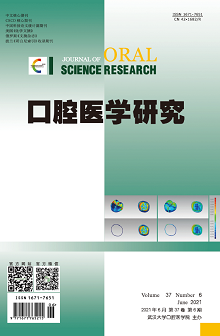|
|
Application and Diagnostic Exploration of 16SrRNA Gene Detection Technology in Oral Microenvironment of Periodontal Disease Patients
YOU Lin, ZHOU Ruiping, GUO Li
2021, 37(6):
574-578.
DOI: 10.13701/j.cnki.kqyxyj.2021.06.020
Objective: To study and analyze the application and diagnostic value of 16SrRNA gene detection technology in oral microenvironment of periodontal disease patients. Methods: One hundred and twenty patients with periodontal disease admitted to the hospital from June 2020 to October 2021 were included in the study, including 40 patients with chronic periodontitis, 40 patients with invasive periodontal disease, and 40 patients with diabetes-related periodontal disease. In addition, 40 healthy volunteers in our hospital were selected as control group. Oral specimens of the above groups were collected, and the bacteria in the samples were extracted strictly following the instructions of the DNA extraction kit. Meanwhile, the concentration and quality of DNA were determined with a NanoDrop 1000 Spectrophotometer nucleic acid quantitative analyzer. PCR amplification, recovery, quantification, Miseq library construction, sequencing, and other operations were completed through the Miseq sequencing platform. Finally, optimization statistics and bioinformatics analysis of 16SrRNA high-throughput sequencing data were completed. Results: Compared with the control group and before treatment, the relative abundance of Microbacterium-chocolatum in chronic periodontitis patients increased significantly after treatment, while the relative abundance of other types of microorganisms decreased. The relative abundance of Rothia-Dentocariosa in diabetes-related periodontal disease was significantly higher than that in other periodontal disease groups. Compared with the control group, the selenium content of Selenomonas-NoXIA was lower in patients with chronic periodontal disease. Paracoccus, Flavobacterium, Microbacterium, Agrobacterium, and Azospirllum in diabetes-related periodontal disease patients were significantly different from those in other periodontal disease groups and control groups. Conclusion: 16SrRNA gene detection technology has high application and diagnostic value in the oral microenvironment of patients with periodontal disease, which is worthy of clinical popularization and application, and may be an effective means for comprehensive cognition of oral microorganisms in patients with periodontal disease.
References |
Related Articles |
Metrics
|

